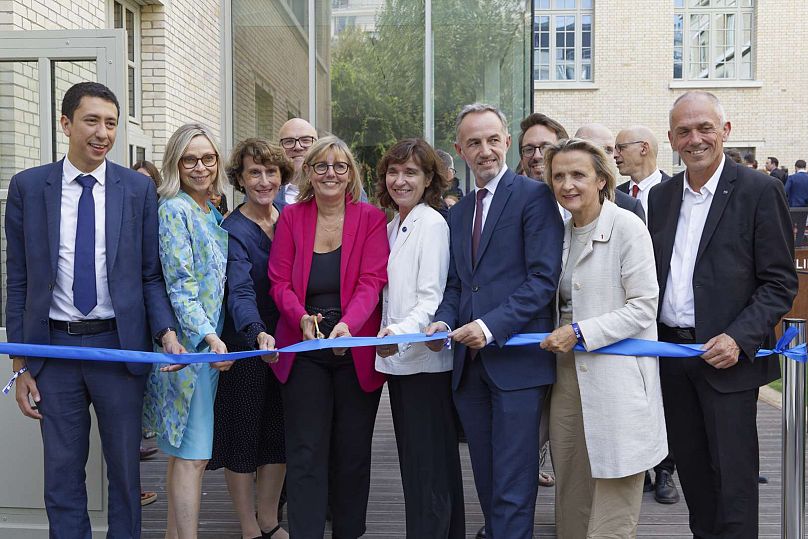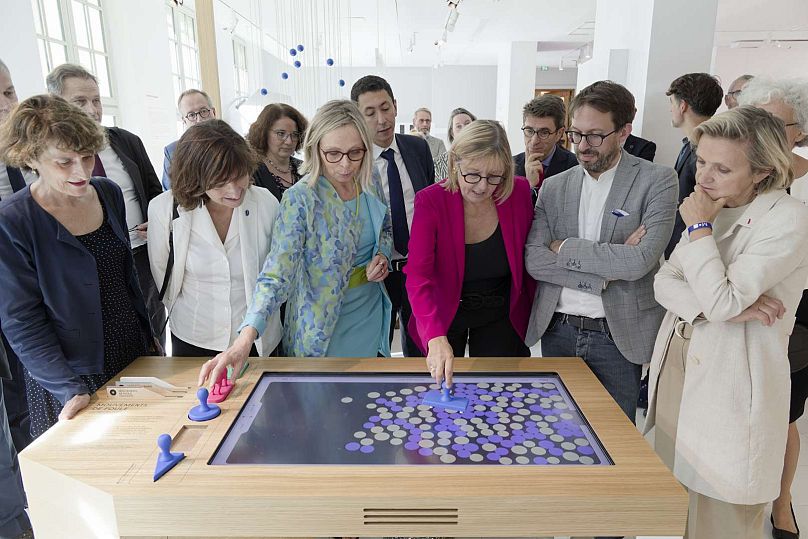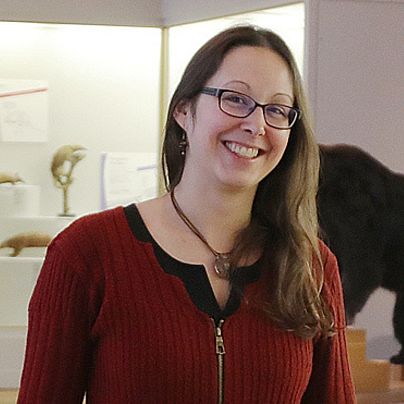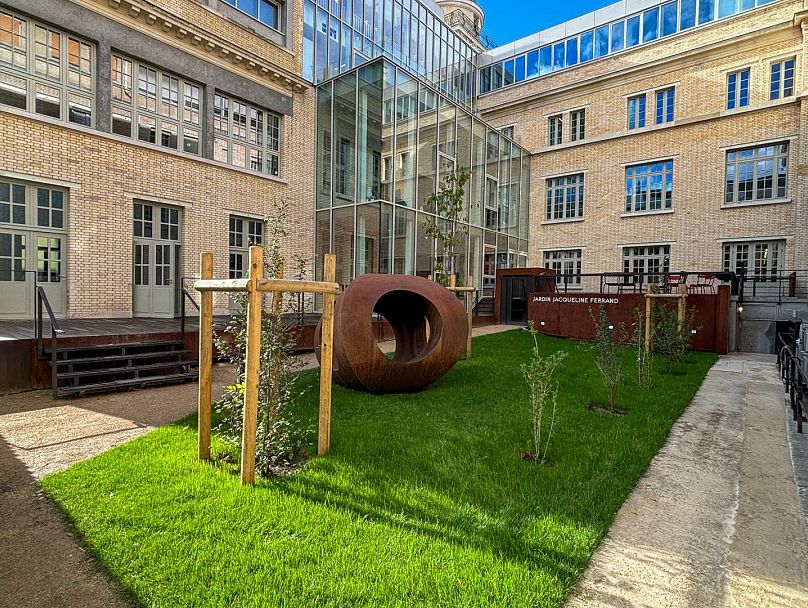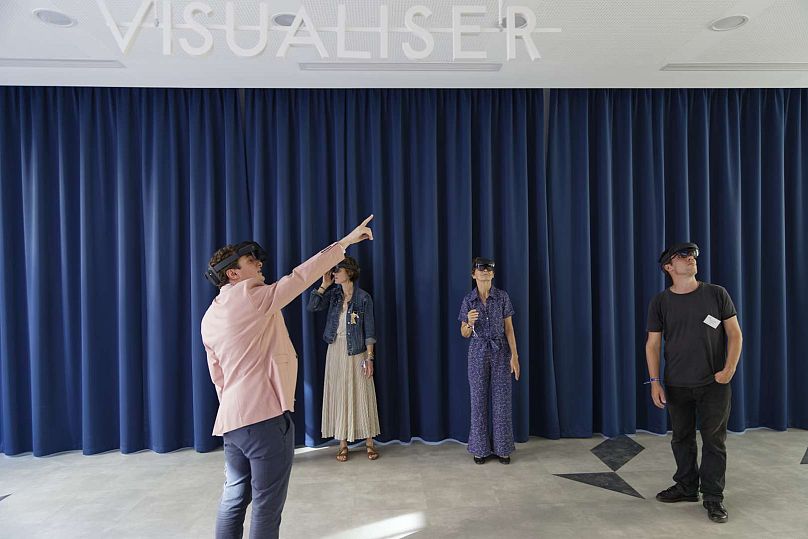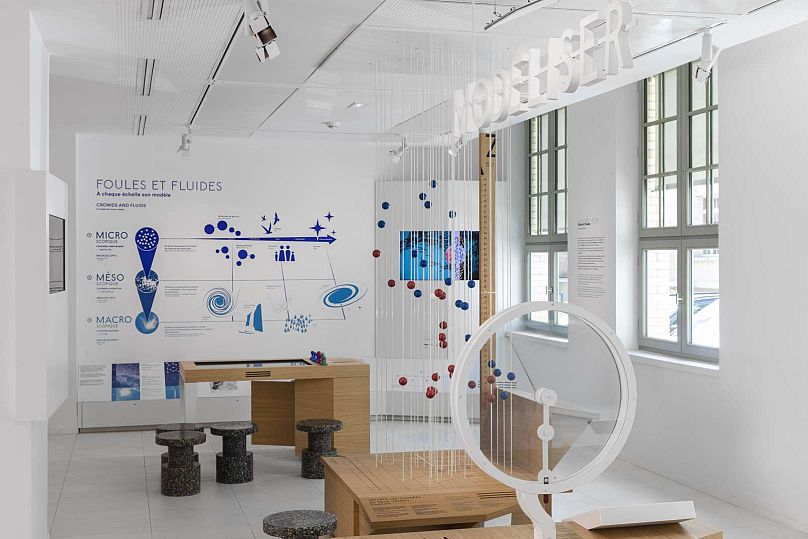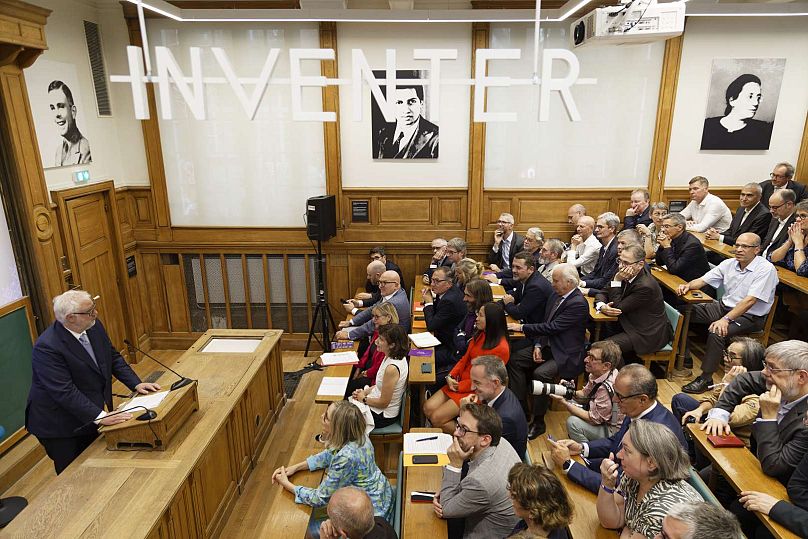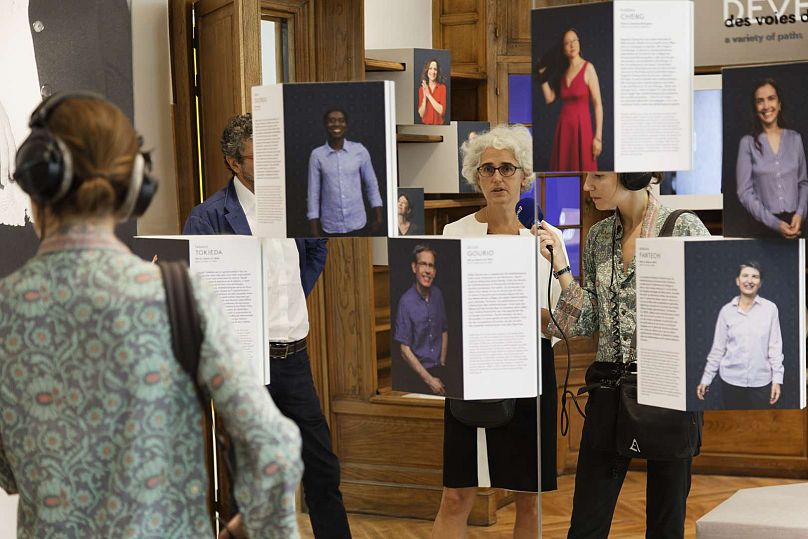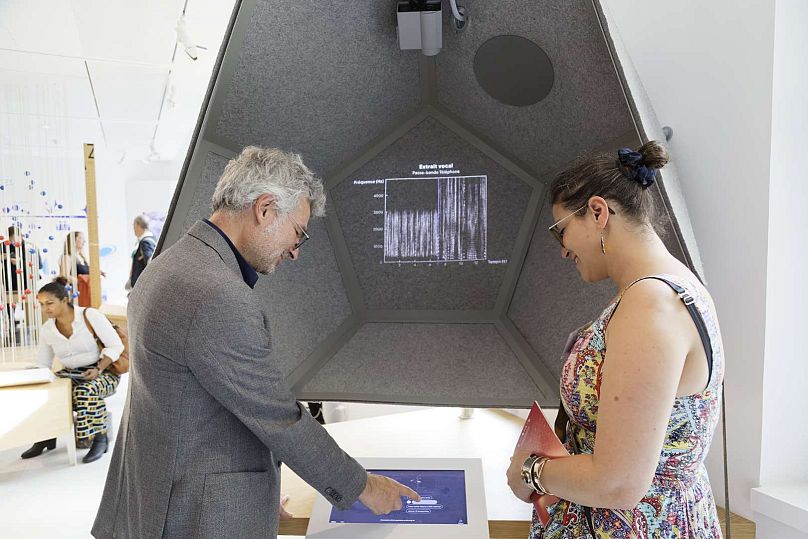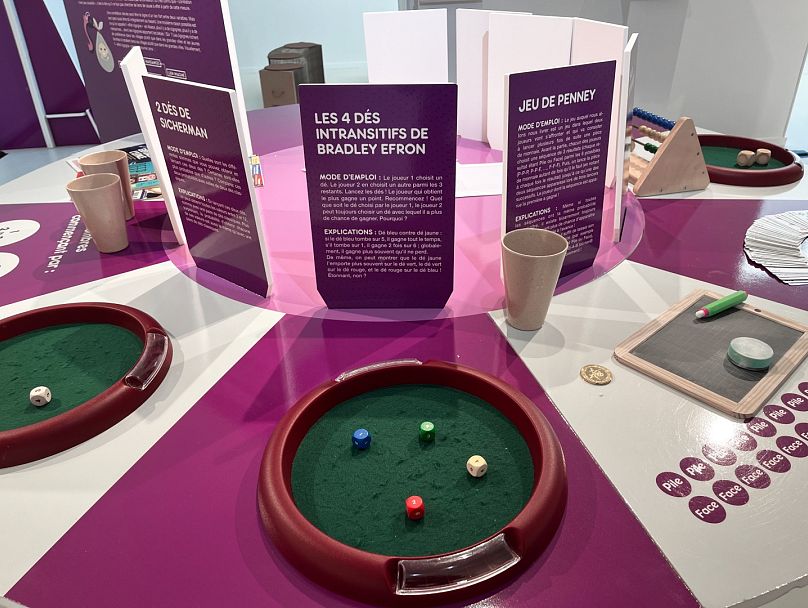Rebranding mathematics: How researchers came together to create France’s first maths museum
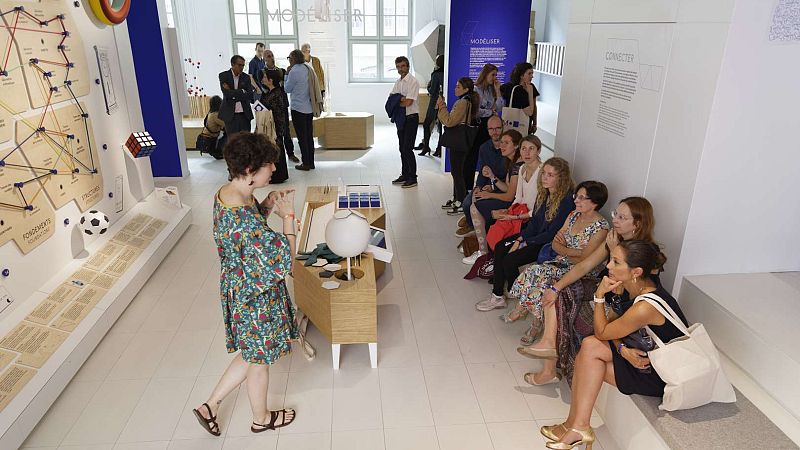
In a red brick building on a small street in Paris’ historic Latin Quarter, a group of high school students are trying to solve a puzzle.
They have to recreate a football from memory, by sticking geometric shapes onto a plain sphere.
It takes some mental gymnastics – hexagons seem like the logical choice, but it’s impossible to cover the ball using only this shape. After some frustration, one of them figures it out - throw in some pentagons at strategic locations, and the sharp angles disappear. The group rejoices.
A version of this scene plays out five days a week at the Maison Poincaré, France’s first-ever museum dedicated to mathematics.
“We tried to create entry points in the museum that would attract people,” says Sylvie Benzoni-Gavage, Director of the Institut Henri Poincaré, which hosts the museum on its campus. “These everyday objects are things people recognise, which allow them to get into the subject a bit more.”
Benzoni-Gavage led a team of professional researchers, mathematics teachers, professors and mediators from other French institutions in designing the museum, carrying on the work of her predecessor, French MP and mathematician Cédric Villani.
On 30 September, it will be one year since the museum opened its doors, with the ambitious goal of making maths fun – especially for young people. But the path forward wasn’t always clear.
“At first I was a bit sceptical, like ‘What exactly are we going to put in this museum?’” Benzoni-Gavage tells Euronews Culture.* “The scientific community wasn’t all convinced either. There was a lot of scepticism. But we needed to meet this challenge. And it became a collective operation.”
How the Paris Mathematics Museum came together
The Institut Henri Poincaré worked with an architect and scenographer to design the museum’s space, which is located on the ground floor of one of the institutional buildings – in the heart of the research centre’s Paris campus.
The scenographer handled the visual aspects of the exhibitions, like choosing furniture or the layout of different exhibits. When it came to content, deciding what to put in the museum was a collaborative effort, explains Benzoni-Gavage.
“The idea wasn’t to make a science museum with toys and games for very young children,” she says. “We really started from the fact that this is an international research centre and we wanted to lean on the scientific community’s knowledge – so we couldn’t speak to very small children.”
Céline Nadal, a museographer, came in to serve as a link between the scientists and the scenographer - using her background in maths and physics to translate some of the more complicated subjects for a wider audience.
Nadal said it’s unusual for researchers to be so involved in the making of a museum or exhibition.
“Normally the scientific council plays more of an external role, re-reading texts and so on,” she shares with Euronews Culture. “But [Benzoni-Gavage] really wanted to have researchers involved throughout the process, even in the conception of certain experiences.”
The researchers even wrote the code for one of the programmes in the museum, which simulates crowd movement.
Benzoni-Gavage also rolled up her sleeves to create prototypes of certain exhibits in the museum, including the advanced level of the football challenge.
Her office is still strewn with some of the models she made from coloured construction paper, including a mysterious shape called a rulpidon, which inspired her latest book.
Maths is modern! Messages behind the Paris Maths Museum
Maison Poincaré’s content is geared towards high schoolers and adults with a basic knowledge of maths. The initial goal, Benzoni-Gavage says, was to make maths better-known to the general public.
“Our point of view as mathematics professionals is that most people don’t know maths,” says Benzoni-Gavage.
“People have this idea of maths related to school, maybe even some bad memories. But in the end they have no idea what maths really does today – no idea that maths progresses every day. Most people think that maths ended with Pythagoras,” she explains.
The maths students learn in school is actually quite outdated, Nadal added.
“The Pythagorean Theorem is from antiquity! We wanted to dust all this off to show that maths is also about contemporary research topics.”
In order to get across the message that maths is modern and interesting, Benzoni-Gavage shares they ruled out focusing too much on the past.
“We didn’t want to make a museum about the history of mathematics – we wanted to make something with a pulse."
Instead, the museum focuses on the present and future of mathematics – its first temporary exhibition focussed on Artificial Intelligence and the permanent “Becoming” exhibit gives examples of real people who use maths in their jobs.
“We wanted to show that working in maths doesn’t necessarily mean doing academic research at a university or the CNRS (French National Centre for Scientific Research),” Nadal says. “There are plenty of other ways to use maths in your job; that’s why we give examples like a magician or a YouTuber who makes videos about maths.”
Tackling maths’ image crisis
Maison Poincaré’s opening was a wedding in the middle of a thunderstorm – as French students’ falling maths scores in recent years have raised alarm bells across the country.
In the latest report from the OECD’s Programme for International Student Assessment (PISA), which analyses data for around 700,000 participating students in 81 countries and economies, French students’ average maths score dropped 21 points in four years.
France also ranked lower in maths than most other EU countries – including Estonia, the Netherlands, Belgium and the UK.
Another obstacle is a lingering negative image of maths that students find hard to overcome, according to Benzoni-Gavage.
“In France, but also elsewhere, maths is a subject that’s used in the selection process for prestigious higher-education programmes,” she says. “There’s this pressure to be good at maths in school - that makes maths a stressful subject for many.”
The fear of making mistakes, or not understanding a topic right away can also be discouraging. For Benzoni-Gavage, maths needs a makeover that will make it more accessible to a greater number of people – especially women and minorities.
“We need to change this idea that maths is about some solitary genius solving impossible calculations at top speed, and describe it also as something collective, something that can be done in cooperation, collaboration, that it can be slow, that mistakes are normal,” she says.
“We need to change this approach to maths that’s eminently elitist in France.”
A subtle statement on gender parity in STEM
Walking around the museum, most visitors might overlook one detail that was central to its planning. If you pay attention, you’ll notice that every exhibition features an equal number of men and women.
Gender parity was a major concern for the team behind Maison Poincaré, a large portion of which are women in the mathematics sector.
“Our point of view was to show a gender-equal world, so that all types of people will feel welcome here, without thinking ‘Oh, that’s reserved for old white men,’” Benzoni-Gavage shares. “We really made an effort to show both gender equality and diversity.”
In France, just 20% of all mathematicians are women - a number that’s hardly grown in the past few decades. By depicting women and men equally in the museum, the team hoped visitors would internalise the idea that women are just as able to pursue maths as men.
But even with the best intentions, the planning committee sometimes found itself falling into familiar patterns, according to Nadal.
“We realised after a while that we really needed to pay attention,” Nadal says. “Because if we didn’t pay attention, we would be feeding into these stereotypes by focusing overly on male voices."
“It became this rule that we established so that visitors to the museum wouldn’t have this unconscious bias suggesting that mathematics is reserved for men.”
She admits they even went as far as to make sure the narration in the exhibitions featured an equal number of male and female voices.
Surprises await the maths-curious
One year on, Maison Poincaré has received a lot of positive feedback from visitors according to Benzoni-Gavage.
“In general, people are surprised and they generally like it,” she says. “People are pretty surprised to see how alive it is, how bright, the fact that maths is so linked to their daily lives.”
She admits that some do leave feeling frustrated that they didn’t fully understand everything, but said in a way that’s representative of the process of learning maths.
“I think that’s also part of the message – you won’t get maths with the snap of your fingers,” Benzoni-Gavage says. “You have to make an effort to really understand. Changing the mindset around maths can help students be more comfortable with making mistakes, with being slow and not understanding a topic right away.”
The museum’s current temporary exhibition, called “Comme Par Hasard (As If By Chance)”, explains probability principles to visitors as young as 8, using interactive games and videos. It runs through 22 March 2025.
Maison Poincaré will also be open to the public free of charge on 12 October for the nationwide Fete de la Science.
The Paris Mathematics Museum, or Maison Poincaré, is open to visitors every day except Sundays and Wednesdays at 11 Rue Pierre et Marie Curie in Paris. Tickets must be reserved online.
Today


